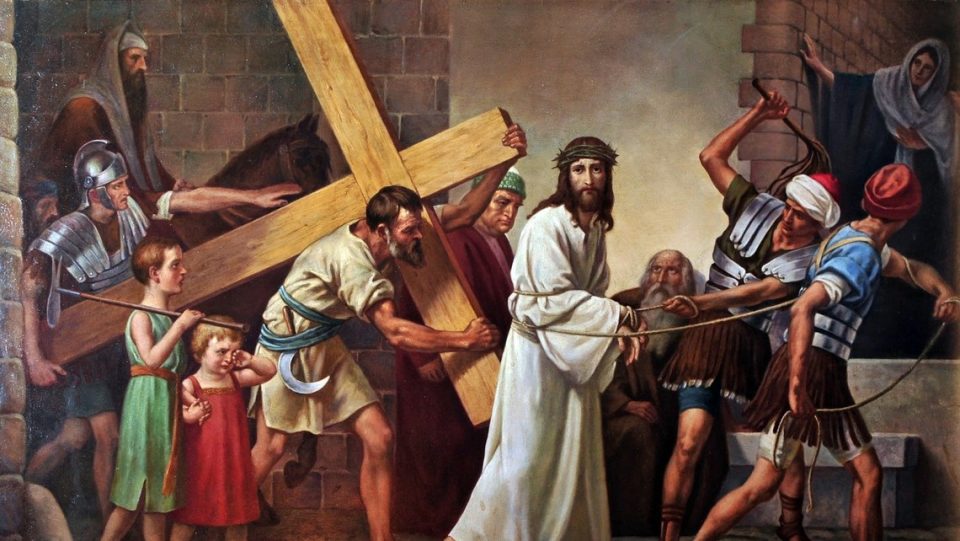Why don't they eat meat in Lent and other questions

Lent is the season to move away from sin and live a life more in conformity with the will and plan of God. Penitential practices are a means to this end. Like diet and exercise for the athlete, prayer, mortification and almsgiving are ways for the Catholic to grow in faith and get closer to Jesus.
Greater attention to prayer may include an effort to attend Mass more often, a trip to a shrine, or a decision to be more aware of God's presence during the day. Penitential practices can take many forms, but the two most common practices are almsgiving and fasting.
Begging is an exercise in the virtue of charity. It gives money or goods for the needs of the poor. The "Lenten Rice Bowl" is a popular way to give alms by giving up every meal and therefore setting aside the money saved for the needy.
The advantages of penitential practices are many. They remind us that we are sinners in need of the salvation of Christ. They declare that we are serious about overcoming our sins. They arrange us to listen to God more clearly and to receive His grace. They neither gain salvation nor collect "points" to heaven; salvation and eternal life are gifts from God to those who believe and walk in his ways. The acts of penance, if undertaken in a spirit of love, help us to draw closer to God.
Fasting refrains from something good and legitimate for the sake of something better and more important. In particular, fasting usually refers to the limitation of the ingestion of food or drink. A person fastes to identify himself with Jesus' sufferings in some way.
Fasting also proclaims our dependence on God for all things. Combined with prayer and other forms of mortification, fasting is an aid to prayer and a way to open your heart and mind to the presence and grace of God.
Fasting has always been part of the Lenten routine of devotion. Originally, legislative fasting limited the consumption of food to one meal a day during the weekdays of Lent. Furthermore, meat and by-products from meat animals, such as eggs, milk and cheese, were prohibited.
The practice of eating pancakes or donuts on Shrove Tuesday (the day before Ash Wednesday, commonly known as "Shrove Tuesday") developed because that was the last opportunity before Lent to taste foods made with milk and butter. This fasting also explains the origin of the Easter egg tradition. After an Lent without eggs, those who enjoyed themselves at Easter were particularly good! Of course, allowances were granted for those suffering from physical ailments or other physical limitations who cannot fully participate in this fast.
Over time this discipline of the Church has been relaxed. Now the assigned fast is to limit the consumption of food to one main meal and two small meals per day, with no food between meals. Today fasting is required only on Ash Wednesday and Good Friday.
The regimented requirements of fasting were removed to allow the faithful greater freedom in practicing significant mortifications for the individual. St. John Chrysostom stressed that a true fast does not consist simply in abstaining from food but in abstaining from sin. So the mortifications of Lent, such as fasting, must strengthen the Catholic to avoid sin.
The Church continues to ask for fasting and other mortifications. However, the Church also encourages people to choose practices they find personally meaningful and useful.
A particular form of fasting is abstaining from meat on Friday. Although it was once necessary for all Fridays of the year, it is now only required on Fridays in Lent. The obvious question is "why is eating fish allowed then?" According to the definition in use at the time of the regulation, "flesh" was the flesh of warm-blooded creatures. Cold-blooded creatures such as fish, turtles and crabs have been excluded because they are cold-blooded. Therefore, fish has become the alternative to "meat" in the days of abstinence.
Another common Lenten practice is to pray at the Stations of the Cross. Since ancient times, the faithful remembered and visited places in Jerusalem associated with the Passion and death of Christ. A popular devotion was to "walk the Passion with Jesus" by following the same path that Jesus had taken to reach Calvary. Along the way the individual would stop in significant places to spend time in prayer and reflection.
Obviously it was impossible for everyone to make the trip to Jerusalem to walk on the steps of Jesus. Thus, during the Middle Ages the practice of establishing these "stations" of the Passion of Jesus arose in local churches. The individual stations would represent a specific scene or event from that walk to Calvary. The faithful could therefore use this local walk as a means of prayer and meditation on the suffering of Jesus.
Initially the number of meditation stops and themes at each station varied widely. By the seventeenth century the number of stations had been set at fourteen and devotion had spread throughout Christianity.
Stations of the Cross can be made at any time. Usually the individual will visit a church and walk from one station to another, stopping at each for a period of prayer and meditation on some aspects of the Passion of Christ. Devotion has a particular meaning in Lent since the faithful anticipate the celebration of the Passion of Christ during Holy Week. Thus in Lent many churches conduct common celebrations of the Stations of the Cross, normally celebrated on Friday.
Christ ordered each disciple to "take up his cross and follow him" (Matthew 16:24). The Stations of the Cross - together with the whole season of Lent - allow the believer to do it literally, while striving to be more intimately united with Christ in his Passion.